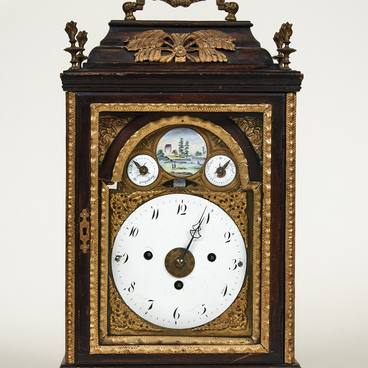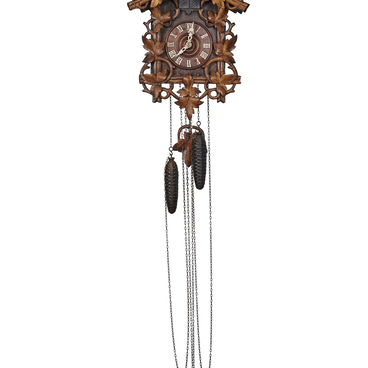The carriage, or travel, clock is called the prototype of the modern alarm clock. During a long trip, especially if it occurred at night, the traveler often did not have the opportunity to use a lamp or a candle to see what time it was. The clock made a beep sound and notified its owner. Later on, the clock were driven to perfection — there appeared marine, railway and automobile clocks. All of them are designed for special purposes, so the clockmakers have to take into account several conditions at once — how long a device like this should serve and how to protect it from external threats: humidity, high and low temperature, dust and dirt.
The first clock for travelers was created in 1451 by a Parisian clockmaker Jean Libour. He put the clock mechanism in a copper case and supplemented it with a striking mechanism to notify the passengers — the sound of the striking clock was very loud and clear. At that time, the sound signal was almost the only means to get information about time during the trip.
Gradually, clockmakers improved clocks for travelers. For example, at the end of the 17th century, there appeared a carriage clock that visually resembled a large onion and had a hinge that partially compensated for the bumps on the road.
The carriage clock was created in the 1790s by the legendary watchmaker Abraham-Louis Bréguet. He manufactured this accessory for almost all the royal families in Europe, including Napoleon Bonaparte. The French emperor commissioned the artisan a small portable device that he could carry around during military campaigns. So, this is how the ‘Pendule de Voyage’ — the clock for traveling — appeared.
Bréguet and his son made many incredibly complex carriage clocks in their lifetime. These clocks stroke different time periods, were equipped with an alarm clock function, had a clock-face in the form of a moon. At the same time, the strict design of the carriage clock did not change throughout the 19th century. As a rule, their frame was made of brass with a minimum of decoration. Such are the clocks from the museum’s collection; they were made in Russia at the end of the 19th century. The clock has an enamel signed clock-face, a half-hour striking mechanism and an alarm. The case is made of wood and covered with leather. In addition, the clock has a glass window that permits to look at the time without taking the clock out of the case.
The first clock for travelers was created in 1451 by a Parisian clockmaker Jean Libour. He put the clock mechanism in a copper case and supplemented it with a striking mechanism to notify the passengers — the sound of the striking clock was very loud and clear. At that time, the sound signal was almost the only means to get information about time during the trip.
Gradually, clockmakers improved clocks for travelers. For example, at the end of the 17th century, there appeared a carriage clock that visually resembled a large onion and had a hinge that partially compensated for the bumps on the road.
The carriage clock was created in the 1790s by the legendary watchmaker Abraham-Louis Bréguet. He manufactured this accessory for almost all the royal families in Europe, including Napoleon Bonaparte. The French emperor commissioned the artisan a small portable device that he could carry around during military campaigns. So, this is how the ‘Pendule de Voyage’ — the clock for traveling — appeared.
Bréguet and his son made many incredibly complex carriage clocks in their lifetime. These clocks stroke different time periods, were equipped with an alarm clock function, had a clock-face in the form of a moon. At the same time, the strict design of the carriage clock did not change throughout the 19th century. As a rule, their frame was made of brass with a minimum of decoration. Such are the clocks from the museum’s collection; they were made in Russia at the end of the 19th century. The clock has an enamel signed clock-face, a half-hour striking mechanism and an alarm. The case is made of wood and covered with leather. In addition, the clock has a glass window that permits to look at the time without taking the clock out of the case.



